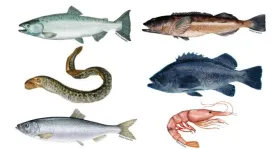By Diana Setterberg, MSU News Service
BOZEMAN – Montana State University scientists say the frozen remnants of an ancient forest discovered 600 feet above the modern tree line on the Beartooth Plateau may portend possible changes for the alpine ecosystem if the climate continues to warm.
A paper about the discovery was published this week in the journal Proceedings of the National Academy of Sciences. It describes what scientists have learned by studying the remains of a mature whitebark pine forest that formed at 10,000 feet elevation about 6,000 years ago, when warm-season temperatures in the Greater Yellowstone Ecosystem were similar to those of the mid-to-late 20th century.
The forest thrived for centuries until the climate began to cool about 5,500 years ago due to declines in summer solar radiation, the researchers found. The cooler temperatures shifted the tree line downslope and transformed the high mountain landscape from forest to the alpine tundra that exists today.
One of the paper’s authors, David McWethy, associate professor in the Department of Earth Sciences in MSU’s College of Letters and Science, said subsequent volcanic activity in the Northern Hemisphere caused the region’s already cooling temperatures to plunge. The pine forest was encased quickly in ice, where it remained preserved until the ice patch began to thaw in recent years. McWethy said its discovery yielded the first evidence from an alpine area of the ecosystem to indicate that mature forests had established upslope when temperatures were warmer.
“This is pretty dramatic evidence of ecosystem change due to temperature warming,” he said. “It’s an amazing story of how dynamic these systems are.”
The paper states that ice patches, unlike glaciers, do not flow. And until recently, the authors wrote, the ice patches slowly and near-continuously accumulated ice, “allowing preservation of deposited materials such as pollen, charcoal and macrofossils within their frozen layers.”
McWethy said the idea to explore Beartooth ice patches for at least 10,000 years of clues about past climate and environmental conditions grew out of work by Craig Lee, now an assistant professor in MSU’s Department of Sociology and Anthropology. In 2007, Lee recovered a portion of a 10,300-year-old atlatl from an ice patch on the plateau, alerting scientists that several millennia worth of cultural materials and environmental data was preserved in nearby layers of ice.
“Most of our best long-term climate records come from Greenland and Antarctica. It’s not a small thing to find ice patches that persisted for that long of a time period at lower latitudes in the interior continent,” McWethy said. The ice patches on the plateau measure hundreds of square meters size, which is fairly small compared to persistent ice masses elsewhere.
In 2016, Lee, McWethy and Greg Pederson, paleoclimatologist for the U.S. Geological Survey’s Northern Rocky Mountain Science Center and lead author of the just-published paper, were awarded a $100,000 Camp Monaco Prize to gather information about environmental change and past human activity from ice patches on the plateau. In 2018, they and others were awarded a grant from the National Science Foundation to study additional alpine ice patches in the area to reconstruct the ecosystem’s long-term climate history and its influence on Indigenous North Americans. McWethy said the NSF-funded work has involved a broad collaboration between tribes, federal agencies, archaeologists and scientists at several universities. The tree line study covers one aspect of the work.
The scientists say it was necessary to study multiple elements of the ancient ecosystem to piece together the frozen forest’s complete story. Members of the team, including MSU graduate and undergraduate students, analyzed layers of water isotopes and organic materials in ice cores taken from the patch, and Pederson harvested cross-sections of wood from the ancient trees for radiocarbon dating. Pederson said the work proved that tree line on the plateau shifted upward in response to regional warming and that the pine forest thrived for 500 years while climate conditions remained moderate and moist.
“The plateau seems to have been the perfect place to allow for ice patches to establish and persist for thousands of years, recording important information on past climate, human activity and environmental change,” Pederson said.
The results of the study suggest current climate conditions could lead to trees moving upslope into areas of the plateau that are now tundra. Pederson stressed, however, that even though the results of the study are site specific, there are strong connections to climate controls on tree line elevations globally.
“Growing season temperatures are the primary control on tree line elevation and latitude,” Pederson said. “However, at individual tree line locations, other factors such as moisture, wind, snowpack and human disturbance may play an important role in dictating forest structure and elevational limits.”
For those reasons, it’s impossible to predict exactly what future tree line forests on the Beartooth Plateau will look like in terms of density, distribution or tree species composition, which will vary depending on how much warming occurs, according to McWethy and Pederson. The tree line will likely rise as the climate warms, they say, but precipitation levels will determine the structure and extent of new forest.
Changes will have significant implications for the future ecosystem, say the study authors, including climate expert and MSU Regents Professor Emerita Cathy Whitlock, who has worked in the Greater Yellowstone Ecosystem for 40 years. She and Pederson said less high-elevation snowpack would affect downstream water supplies for irrigation and electricity generation. McWethy added that if forests begin to establish in tundra, fuel conditions could change dramatically, potentially increasing the risk of wildfires.
“That’s the reason why studies of past ecological change are more than interesting pieces of science,” Pederson said. “They have much larger implications for the resources we all depend on.”
END






